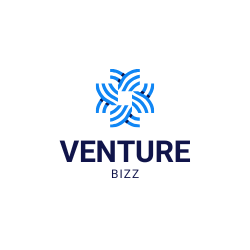You have built your MVP. You have validated the problem. You have brought on your first hire.
Now comes the hard part: getting users to care.
For early-stage startups, the go-to-market (GTM) phase is where traction becomes real, or growth stalls. While most founders excel in product building, GTM requires a different mindset: positioning, messaging, channel testing, pricing, and user activation.
Modern venture capital firms know this. That is why they are embedding GTM expertise into their platform teams, helping founders turn product into momentum.
What Does Go-to-Market Mean?
Go-to-market is the strategy and execution plan for how a startup introduces its product to the world and acquires its first paying users or customers.
It involves:
Market segmentation
Value proposition design
Pricing and packaging
Sales strategy or self-serve funnel
Channel mix (paid, organic, partnerships)
Activation and retention tactics
Where VCs Make the Difference
Go-to-market is not one-size-fits-all. Great venture platforms tailor support to the founder’s market, stage, and business model.
Here is how VC platform teams help:
1. Messaging and Positioning
VC GTM experts help founders clarify their value proposition and create differentiation against incumbents or copycats.
2. Channel Testing and Playbooks
Firms like a16z and First Round Capital provide templates and workshops to test paid channels, content marketing, partnerships, or product-led growth.
3. Growth Analytics
Early metrics matter. VCs help set up dashboards to track CAC, activation rates, and retention from Day 1.
4. Sales Strategy
For B2B startups, VC GTM partners may help craft pitch decks, build outbound scripts, and even join first sales calls.
5. Warm Intros and Pilot Customers
Strategic VC networks open doors, helping startups land key pilots with corporates or launch with trusted beta users.
Case Study: a16z’s GTM Network
Andreessen Horowitz has invested heavily in GTM enablement. Through its operating partner network, it supports early-stage founders with:
Pricing strategy workshops
Intro pipelines to enterprise design partners
In-house marketers and brand strategists
Content strategy and SEO coaching
Their belief: product + GTM = a real startup. One without the other is just a science project.
Common GTM Pitfalls
Launching without a clear audience
Overbuilding features instead of testing messaging
Burning paid ad budget before finding organic pull
Hiring a sales team too early
Great VCs help founders avoid these traps by grounding GTM in experimentation and fast feedback.
What to Ask Your VC About GTM Support
If you are talking to a potential investor, ask:
Do you offer GTM support or frameworks?
Have you helped other portfolio companies launch?
Can you help us run a pricing experiment or customer sprint?
If their answer is vague, they may not have a platform, or they may not prioritize post-investment value creation.
Wrapping Up
In the early days, the best GTM strategy is the one that helps you learn fastest. Venture capital firms that build GTM muscle into their support systems give founders a head start and reduce time-to-traction.
In next week’s issue, we will explore defensibility: How VCs Help Founders Build Moats Early.
References
Andreessen Horowitz. (2023). Growth at a16z.
First Round Review. Leslie’s Compass: A Framework For Go-To-Market Strategy.
OpenView Partners. (2022). What is Product Led Growth (PLG)?



